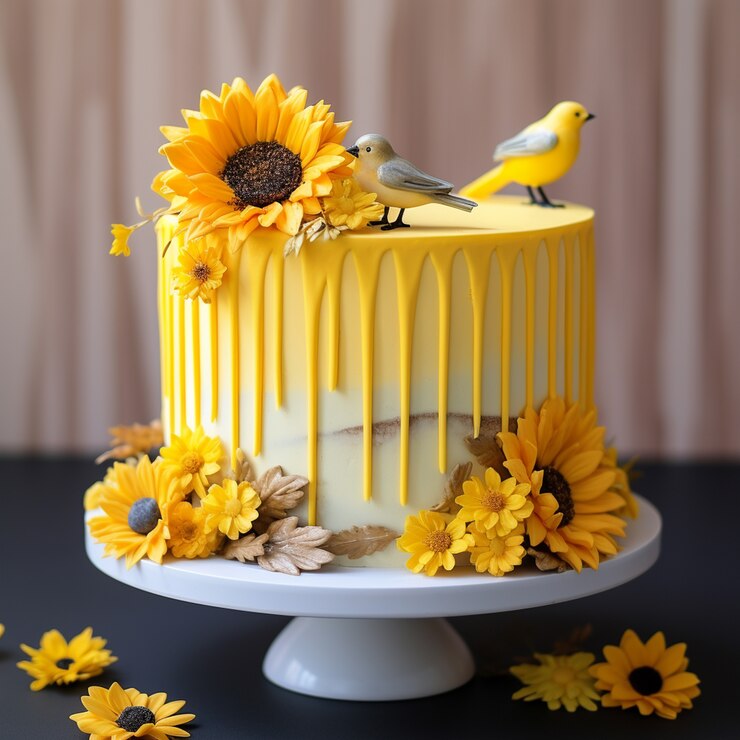
Cake decorating has evolved into an art form where cakes are no longer just about taste - they're also about storytelling. Whether it's a rustic woodgrain effect for a wedding cake, a marbled stone finish for an elegant tiered masterpiece, or a leather-like texture for a luxury-themed dessert, realistic fondant textures can elevate a cake from ordinary to extraordinary. But achieving these intricate details requires precision, the right techniques, and an understanding of how to manipulate fondant to mimic natural textures.
At Cremez, located in HSR Layout, we specialize in teaching and perfecting advanced cake decorating techniques. Whether you're a hobbyist looking to enhance your skills or a professional baker wanting to master fondant artistry, our baking diploma, hands-on workshops, and expert-led training programs offer in-depth learning experiences. Under the guidance of Chef Mamatha, a certified patisserie and culinary expert, our students gain firsthand knowledge of creating stunning edible textures.
Beyond teaching, we also take custom cake orders for events, weddings, corporate functions, and bulk orders, ensuring that every cake is a work of edible art. If you're looking to improve your decorating skills or need a cake that truly stands out, DM or email us today to explore our offerings.
Let's dive into the art of creating realistic textures in fondant and how you can achieve professional-level results.
Mimicking Woodgrain: The Secret to Rustic Elegance
Wood-textured cakes are a favorite for rustic weddings, woodland-themed celebrations, and vintage-inspired designs. Achieving an authentic wood effect in fondant requires a combination of impression mats, sculpting tools, and careful shading to replicate the natural grain and knots found in real wood.
The first step to creating a wood effect is rolling out the fondant to the right thickness - too thick, and it looks unnatural; too thin, and it lacks dimension. Using woodgrain impression mats can help add a base texture, but to take it a step further, hand-tooling with sculpting brushes can create deeper knots and cracks, enhancing the realism.
Coloring plays a vital role in achieving depth. Instead of using a single brown shade, blending different hues - such as warm caramel, deep chocolate, and hints of gold or black - gives the wood effect a lifelike appearance. Dry brushing and edible petal dusts can further enhance the texture, making the grains more pronounced.
In our baking programs and workshops, we guide students through the entire process, from fondant handling to detailed texturing and shading, ensuring that their woodgrain cakes look as realistic as possible.
Stone and Marble Effects: Achieving a Timeless Look
The marbled stone look is a favorite among contemporary cake designs, often used for elegant wedding cakes, luxury-themed events, and artistic creations. Creating a natural stone effect in fondant involves blending multiple colors without overmixing, allowing the colors to form natural streaks and veins.
To achieve this, fondant in varying shades of gray, white, or even soft pastels is gently twisted and kneaded together, creating delicate veining without fully merging the colors. Once rolled out, subtle hand-tooling can add cracks or rough edges to mimic natural imperfections found in real stone.
For darker stone effects, such as granite or slate, the addition of edible metallics like silver or charcoal dust can give the fondant a refined, high-end appearance. Marbling techniques are a key focus in our advanced cake decorating programs, where we teach students how to balance color blending and texture creation for a stunningly realistic finish.
Leather Effects: Perfecting the Look of Luxury
Leather-textured cakes are a bold choice for fashion-themed cakes, masculine designs, and corporate branding projects. Whether it's the smooth finish of a fine leather handbag cake or the aged, distressed look of a vintage leather-bound journal, fondant can be transformed into incredibly realistic leather textures with the right techniques.
Achieving a smooth leather finish requires precise fondant rolling and paneling, ensuring that seams mimic the stitching found in real leather goods. Embossing mats and veining tools help add fine grain details, while edible paints and dusts are used to create color variations that bring out the texture.
For an aged or worn leather effect, techniques such as hand-brushing with edible gels, buffing with a sponge, and layering matte finishes can add depth and realism. Stitching effects can be achieved using specialty rolling tools or fine piping techniques, further enhancing the authenticity of the design.
At Cremez, our baking courses and workshops cover these intricate fondant manipulation techniques, helping students achieve flawless leather textures for high-end cake designs.
Why Learning from Professionals Makes a Difference
Creating realistic textures in fondant requires more than just tools - it requires an understanding of artistic techniques, color theory, and hands-on practice. While online tutorials can give you a basic idea, working with professionals ensures that you master these techniques correctly and efficiently.
At Cremez, we offer:
- Professional baking courses, including a diploma in baking
- Specialized cake decorating workshops focusing on fondant artistry
- One-on-one and group training sessions, both online and offline
- Corporate and bulk order services for businesses, events, and celebrations
Under the expertise of Chef Mamatha, students at Cremez learn the secrets behind perfecting fondant textures, enhancing realism, and creating show-stopping cakes that stand out in any event.
If you're looking to take your cake decorating skills to the next level or need a custom-designed cake that mimics real-life textures, DM or email us today. At Cremez, we believe in pushing the boundaries of edible artistry - one masterpiece at a time.
Copyright 2025, Cremez. All right reserved